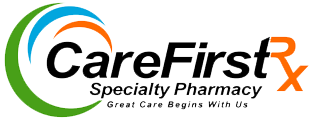Niclosamide Paving the Way for New Therapy Possibilities
Niclosamide is an oral anthelmintic drug first discovered in 1953 by Bayer, to kill snails and trematodes. Initially approved for human use in 1982 to treat tapeworm infections, recent study findings demonstrate that niclosamide is a multifunctional drug that is able to inhibit or regulate multiple signaling pathways and biological processes, suggesting that it may be developed as a novel treatment for more than just helminthic disease. Other than parasitic diseases, niclosamide can potentially treat metabolic diseases, immune system diseases, bacterial and viral infections, asthma, arterial constriction, myopia, and cancer. Niclosamide shows promise as a repurposed drug because it is cytotoxic but when taken orally, it is absorbed only partially by the intestine and the absorbed portion is rapidly eliminated by the kidney; therefore, it has no cumulative toxic effect on humans.
Current therapies for cancers—including chemotherapy, radiation therapy, hormone therapy, and targeted therapy—pose either mass-cytotoxicity or only single-target efficacy. Niclosamide exhibits broad anti tumor activity as it inhibits multiple oncogenic pathways, activates tumor suppressor signaling pathways, and can potentially improve immunotherapy by modulating pathways such as PD-1/PDL-1 via PD-L1 ligand downregulation in cancer cells. In a study by Luo et. al. mice treated with niclosamide and PD-L1 antibody showed significant delay in tumor growth and increased survival which were associated with the increase of tumor infiltrating T cells and granzyme B release. The anti-cancer activity of Niclosamide is associated with the inhibitory effects on multiple intracellular signaling pathways such as Wnt/β-catenin signaling (adrenocortical carcinoma, ovarian cancer, glioma, colorectal, breast, head and neck, and renal cell carcinoma). Niclosamide has two major salt forms which can target different diseases; Niclosamide ethanolamine salt (NEN) and Niclosamide piperazine (NPP). NEN has a high solubility in water which results in higher oral bioavailability and greater potency. Both NEN and NPP have shown promise in various types of cancer via mitochondrial uncoupling manipulation; This is the process in which the proton gradient across the inner mitochondrial membrane dissipates, inhibiting ATP synthesis and activating the electron transport chain to promote NADH oxidation. This process promotes cellular differentiation, which is a major factor in cancer treatment.
Upon discovering the potential of Niclosamide for cancer treatment, new formulations arose to improve the water solubility of the niclosamide and thus reduce its toxicity leading to better tumor treatment effects. For example, an injectable pegylated version of niclosamide (polyethylene glycol-modified niclosamide) was synthesized, and found to be less toxic due to the incorporation of octenylsuccinate hydroxypropyl phytoglycogen (OHPP), which is an amphiphilic dendrimer-like biopolymer. Other formulations include nano liposomal encapsulation which enhances the aqueous solubility of niclosamide and improves its anti-tumor properties.
Niclosamide is multifaceted and has also shown promise in regulation of metabolic diseases or metabolic disorders, including obesity, diabetes, and non-alcoholic fatty liver disease. NEN can inhibit the progression of type 1 diabetic nephropathy by reducing urinary albumin levels and improving renal hypertrophy, which reduces podocyte (highly specialized cells of the kidney glomerulus) dysfunction. Additionally, NEN can increase lipid metabolism, uncouple kidney mitochondria, and has a protective effect on the liver with no cardiotoxicity. Although niclosamide has demonstrated broad spectrum antiviral properties in serious viruses, such as Coronavirus, Zika, Hepatitis C, and Epstein barr virus, the specific mechanism behind this remains unclear.
As with any drug, there are side effects; Constipation is one of the most common side effects that Niclosamide can cause. Along with this, nausea, vomiting, abdominal pain, and itchiness can also be experienced, however it is generally well tolerated by itself. There are no contraindications for this drug except hypersensitivity to the drug. Although Niclosamide is on the essential drugs list by the World Health Organization (WHO), it is no longer commercially available in the United States. Niclosamide is available via compounding pharmacies because it was extracted from the commercial market due to limited profitability.

Comments